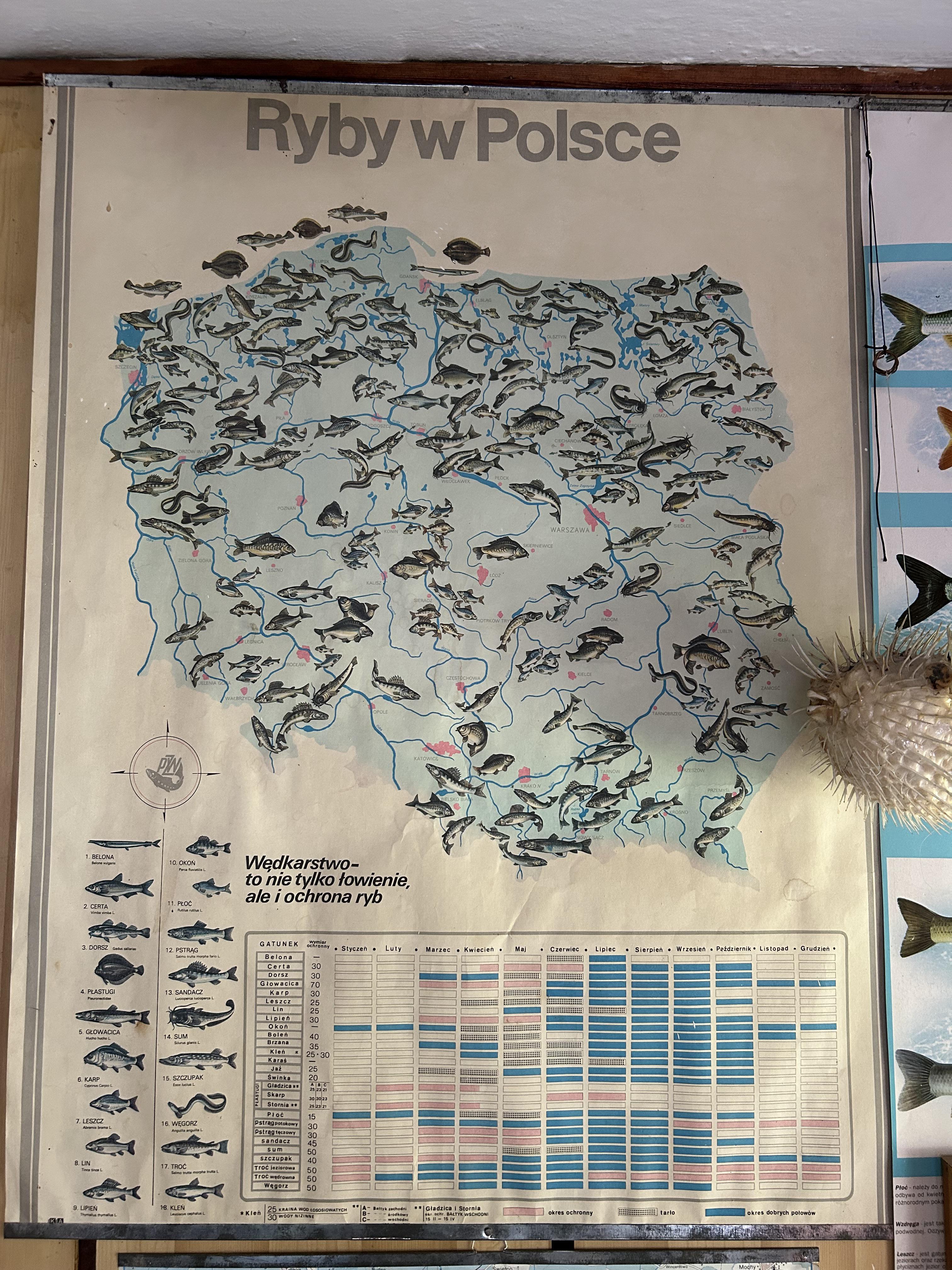Freshwater Fish Distribution Map of Poland


Alex Cartwright
Senior Cartographer & GIS Specialist
Alex Cartwright is a renowned cartographer and geographic information systems specialist with over 15 years of experience in spatial analysis and data...
Geographic Analysis
What This Map Shows
The "Freshwater Fish Distribution Map of Poland" provides a detailed visualization of the various species of freshwater fish present in Poland's rivers, lakes, and other water bodies. By mapping out these species, the visualization helps us understand the biodiversity of Poland's aquatic ecosystems and highlights the geographical distribution of these fish. The map serves as a valuable resource for anglers, ecologists, and anyone interested in the health of Poland's freshwater ecosystems.
Deep Dive into Freshwater Fish in Poland
Poland is home to a diverse range of freshwater fish species, thanks to its varied aquatic environments. The country boasts a mix of rivers, lakes, and wetlands, each providing unique habitats for different fish species. The most notable water bodies include the Vistula River, the Oder River, and the numerous lakes in the Masurian Lake District.
Interestingly, Poland's freshwater ecosystems are home to over 100 species of fish, ranging from common species like the European perch and pike to more specialized species such as the Polish endemic fish, the Polish grayling. The Vistula River, Poland's longest river, is particularly rich in biodiversity and serves as a critical habitat for many fish species. It flows through various landscapes, from mountainous regions to flat plains, creating a range of ecological niches.
One of the most remarkable aspects of Poland's freshwater habitats is the seasonal migrations of fish. For instance, species like the salmon and the eel travel long distances to spawn. The Vistula River serves as a critical route for these migrations, highlighting the importance of maintaining healthy river ecosystems.
Moreover, freshwater fish populations in Poland face various challenges, including pollution, habitat destruction, and climate change. As water quality deteriorates and temperatures rise, some species may struggle to adapt, leading to shifts in fish populations. Interestingly, studies show that native species are often more vulnerable to these changes compared to non-native species, which can sometimes thrive in altered environments.
Regional Analysis
When analyzing the distribution of freshwater fish across Poland, it becomes apparent that certain regions stand out due to their unique ecological characteristics. For example, the Masurian Lake District is not only famous for its stunning landscapes but also for a high density of fish species. Here, anglers can expect to find pike, perch, and various species of carp, making it a popular destination for recreational fishing.
In contrast, the Oder River, which flows through western Poland, supports a different set of fish species. The river's slower currents and varied depth profiles provide an ideal habitat for species like the catfish and the zander. The differences in fish populations across these regions reflect the diverse environmental conditions and the varying ecological pressures they face.
Interestingly, urban areas like Warsaw and Wrocław have also impacted freshwater fish populations. Urbanization often leads to increased runoff and pollution, which can adversely affect local fish habitats. However, conservation efforts are being implemented to restore and protect these habitats, demonstrating a growing recognition of the importance of maintaining healthy freshwater ecosystems.
Significance and Impact
Understanding the distribution of freshwater fish in Poland is essential for several reasons. First and foremost, fish play a crucial role in aquatic ecosystems, serving as both predators and prey. Healthy fish populations are indicative of the overall health of the ecosystem, and changes in their distribution can signal environmental issues that require attention.
Moreover, freshwater fish are vital for recreational and commercial fishing industries, which contribute significantly to Poland's economy. Anglers contribute to local economies through tourism, creating jobs and supporting local businesses. As such, maintaining healthy fish populations is not just an ecological concern but also an economic one.
Looking ahead, current trends suggest that climate change will continue to affect freshwater ecosystems. Rising temperatures and altered precipitation patterns may lead to shifts in fish distribution and population dynamics. Therefore, ongoing research and monitoring are crucial in managing these ecosystems effectively. Have you noticed how climate change is reshaping fish populations in various regions? The future of Poland's freshwater fish relies on our collective efforts to understand and protect these vital ecosystems.
Visualization Details
- Published
- August 8, 2025
- Views
- 160
Comments
Loading comments...